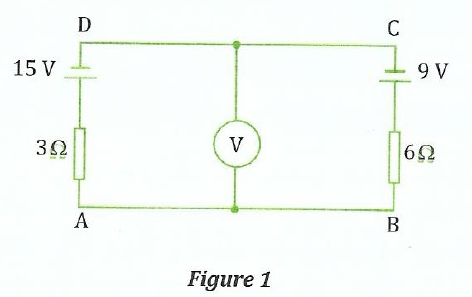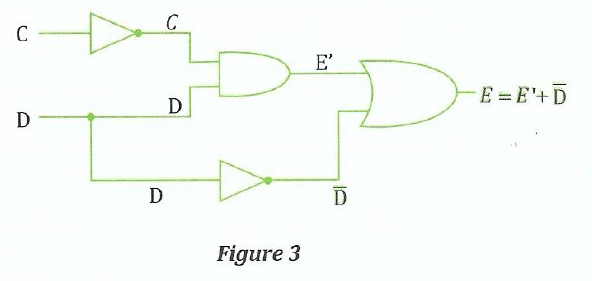THE UNITED REPUBLIC OF TANZANIA NATIONAL EXAMINATIONS COUNCIL OF TANZANIA ADVANCED CERTIFICATE OF SECONDARY EDUCATION EXAMINATIONS
131/1 PHYSICS 1
(For Both School and Private Candidates)
Time 3 Hours Year: 2018
Instructions
1. This paper consists of sections A and B with a total of ten (10) questions.
2. Answer all questions in section A and two (2) questions from section B.
3. Section A carries seventy (70) marks and Section B carries thirty (30) marks.
4. Marks for each question or part thereof are indicated.
5. Mathematical tables and non-programmable calculators may be used.
6. Cellular phones and any unauthorized materials are not allowed in the examination room.
7. Write your Examination Number on every page of your answer booklet(s).
8. The following information may be useful:
Density of water = 1000 kg/m3
Density of air = 1.3 kg/m 3
Radius of Earth = 6.4 x 10 6 m
Stefan's constant = 5.67 x 10-8 Wm-2 K -4
Solar constant 1.4 kWm -2
Specific heat capacity of water = 4200 Jkg-l
Acceleration due to gravity = 10 m/s2
One gram of water = lcm3
1 atmosphere = 1.013 x 10 5 Pa
Pi, = 3.14
1. (a) (i)How can random and systematic errors be minimized during an experiment?
(ii) Estimate the precision to which the Young's modulus, of the wire can be determined by the formula

given that the applied tension F = 500 N, the length of the loaded wire, I = 3 m, the diameter of the wire, d = 1 mm, the extension of the wire, e = 5 mm and the error associated with these quantities are 0.5N, 2 mm, 0.01 mm and 0.1 mm respectively.
View Ans
(b)(i) State the law of dimensional analysis.
(ii) If the speed V of the transverse wave along a wire of tension, T and mass, m is given by,

Apply dimensional analysis to check whether the given expression is m
correct or not.
View Ans
2. (i) Under what condition a passenger in a lift feels weightless?
(ii) Calculate the tension in the supporting cable of an elevator of mass 500 kg which was originally moving downwards at 4 m/s and brought to rest with constant acceleration at a distance of 20 m.
View Ans
(b) (i)The rotating blades of a hovering helicopter swept out an area of radius 2 m imparting a downward velocity of 8 m/s of the air displaced. Find the mass of the helicopter.
(ii) Compute the mass of water striking the wall per second when a jet of water with a velocity of 5 m/s and cross-sectional area of 3 x 10 -2 m 2 striked the wall at the right angle losing its velocity to zero.
View Ans
3. (a) (i) How does projectile motion differ from uniform circular motion?
(ii) A rifle shoots a bullet with a muzzle velocity of 1000 m/s at a small target 200 m away. How high above the target must the rifle be aimed so that the bullet will hit the target?
View Ans
(b) (i) Where does the object strike the ground when thrown horizontally with a velocity of 15 m/s from the top of a 40 m high building?
(ii) Find the speed of travel when a man jumps a maximum horizontal distance of 1 m spending a minimum time on the ground.
View Ans
4. (a) What is meant by the following terms as used in simple harmonic motion (S.H.M)? (i) Periodic motion
(ii) Sketch a labelled graph that represents the total energy of a particle executing simple harmonic motion (S.H.M).
View Ans
(b) (i) List four important properties of a particle executing simple harmonic motion (S.H.M)
(ii) Sketch a labelled graph that represents the total energy of a particle executing simple harmonic motion (S.H.M)
View Ans
(c )The periodic time of a body executing S.H.M is 4 seconds. How much time interval from time t = 0 will its displacement be half its amplitude?
View Ans
5. (a) A satellite of mass 600kg is n a circular orbit at a height 2 x 106km above the earth’s surface, determine the;
(i) orbital speed
(ii) Gravitational potential energy
View Ans
(b) (i) What would happen if gravity suddenly disappears?
(ii) Two bases of a mountain are at sea level where the gravitational field strength is 9.81N/kg. If the value of gravitational field at the top of the mountain is 9.7N/kg, calculate the height of the mountain above the sea level.
View Ans
6. (a)(i) Why is flywheel designed such that most of its mass is concentrated at the rim? Briefly explain
(ii) Estimate the couple that will bring the wheel to rest in 10 seconds when a grinding wheel of radius 40 cm and mass 3 kg is rotating at 3600 revolutions per minute.
View Ans
(b) (i)Why does an ice skater rotate at relatively low speed when she stretches her arms and leg outward?
(ii) Calculate the moment of inertia of a sphere about an axis which is a tangent to its surface given that the mass and radius of the sphere are 10 kg and 0.2 m respectively.
View Ans
SECTION B
7. (a) (i) Which type of thermometer is most suitable for calibration of other thermometers?
(ii) Why are at least two fixed points required to define a temperature scale?
View Ans
(b) (i) List two qualities which make a particular property suitable for use in practical thermometers.
(ii) Describe how mercury in glass thermometer could be made sensitive.
View Ans
(c)(i) What is meant by the triple point of water?
(ii) Evaluate the temperature in Kelvin if the pressure recorded by a constant volume gas thermometer is 6.8 x 104 Nm-2 given that the pressure at triple point 273. 16 K is 4.6 x 104 Nm-2.
View Ans
8. (a) One gram of water becomes 1671 cm3 of steam at a pressure of 1 atmosphere. If the latent heat of vaporization at this pressure is 2256 J/g, determine the:
(i) External work done.
(ii) Increase in internal energy
View Ans
(b) (i) Why during emission of radiations from black body its temperature does not reach zero Kelvin?
0
(ii) A black ball of radius 1 m is maintained at a temperature of 30C. How much heat is radiated by the ball in 4 seconds?
View Ans
9. (i) (a)What do you understand by the term node as applied to electric circuits?
(ii) Outline three important points which are usually referred as sign convection in solving Kirchhoff's second law problems.
View Ans
(b) (i) How does ohmic conductor differ from non-ohmic conductor? Give one example in each case.
(ii) Study Figure 1 then find the reading on the high resistance volmeter, V.

View Ans
c)(i) Why is the e.m.f of a cell sometimes called a special terminal potential difference?
(ii) Calculate the current flowing in the circuit when three similar cells each of e.m.f, 1.5 V and internal resistance 0.3 0 are connected in parallel across a 2 0 resistor.
View Ans
10. (a)(i) Mention four types of energy losses suffered by a transformer.
(ii) Why is choke coil preferred over resistance to control alternating current?
View Ans
(b) (i)Identify two difficulties which would arise when two straight wires are used to transmit electricity direct from the source to the city station.
(ii) Explain what could be done to light a 30 V bulb from a 220 volt A.C supply?
View Ans
(c) A series LCR circuit with inductance, L = 0.12 H, capacitance, C = 480 n F and resistance, R = 23 0 is connected to a 230 V variable frequency supply. Determine the:
(i) Maximum current flowing in the circuit.
(ii) Source frequency for which the current is maximum.
View Ans
SECTION C
11.(a)(i) List two chief properties of semiconductors
(ii) Why is it easier to establish the current in a semiconductor than in an insulator?
View Ans
(b) (i)State a condition that could be employed to make an insulator conduct some electricity.
(ii) Distinguish between conductors and semiconductors on the basis of their energy band structures.
View Ans
(c) (i)What is meant by depletion layer as used in pn-junction devices?
(ii) Describe the effect of applying a reverse bias to the junction diode.
View Ans
12. (a) (i) Sketch the graph of transfer characteristic of a transistor.
(ii) State the significance of the slope from the graph in (a) (i).
View Ans
(b) (i)What is the basic condition for a transistor to operate properly as an amplifier? (ii) Briefly explain how a junction transistor can be connected to act as a current operated device.
View Ans
(c) (i) Why is the magnitude of output frequency of a full wave rectifier twice the input frequency?
(ii) Draw a simple basic transistor switching circuit diagram.
View Ans
13. (i) What is meant by a logic gate?
(ii) List three basic logic gates that make up all digital circuits.
View Ans
(b) Study Figure 2 then answer the questions that follow:

Figure 2
(i) Identify the logic gates marked R and S
(ii) Write down the output at s, such that when P = 1, Q = 1 and when P = 0, Q = 0.
View Ans
(c) Obtain the truth table for the circuit shown in figure 3.

View Ans
14. (a) (i) What is meant by solar constant?
(ii) List two factors on which the solar constant depends.
View Ans
(b)(i)Give two advantages of photovoltaic systems.
(ii) Briefly explain how photovoltaic cells work.
View Ans
(c ) (i) Estimate the maximum power available from 10m2 of solar panels.
(ii) Calculate the volume of water per second which must pass through if the inlet and outlet temperature of the panels are at IO O C and 60 0 C respectively. (Assume the wave carries away energy at the same rate as the maximum power available).
View Ans
 For Call,Sms&WhatsApp: 255769929722 / 255754805256
For Call,Sms&WhatsApp: 255769929722 / 255754805256
 For Call,Sms&WhatsApp: 255769929722 / 255754805256
For Call,Sms&WhatsApp: 255769929722 / 255754805256
 For Call,Sms&WhatsApp: 255769929722 / 255754805256
For Call,Sms&WhatsApp: 255769929722 / 255754805256